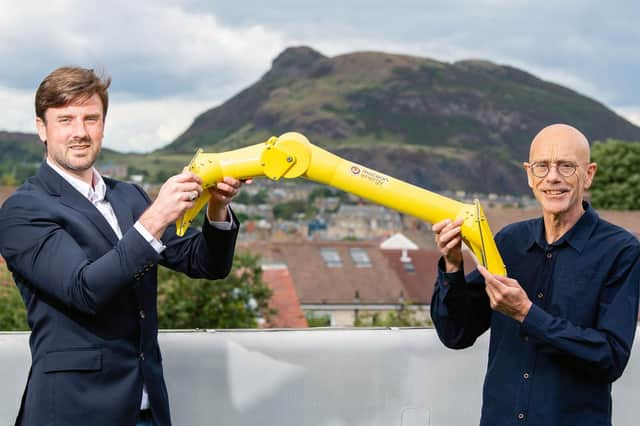How wave energy is contributing to Scotland's net zero targets


And the Scottish Government's programme for 2020/21 recognised the importance of Scotland's marine assets in helping achieve its green aspirations, stating: “Our natural marine assets and our expertise in the sector help to support our work to develop and deploy offshore wind, wave and tidal energy technologies and to explore the potential of carbon capture, usage and storage.”
Scotland’s Energy Minister, Paul Wheelhouse, says: “Scotland is a world leader in marine renewable energy as a result of consistent and committed support from the Scottish Government together with the expertise, investment and innovation of the industry.
“The Scottish Government continues to champion the wave energy and wider marine energy sector – supporting the research, development, innovation and demonstration that will maintain Scotland’s competitive advantage.
“We believe that wave energy can play an important role in Scotland’s response to the global climate emergency and the decarbonisation of our energy system.”
The placing of such significance on the use of the country's marine resources is, unsurprisingly, welcomed by Tim Hurst, managing director of Wave Energy Scotland (WES), which leads the search for innovative solutions to challenges in the sector.
Hurst says: “The target of being net zero by 2045 is an ambitious challenge. But given the resources Scotland has and how far we have come already in terms of renewables, I believe it's achievable.
“The recent Programme for Government has some big commitments for a low carbon future. The Scottish Government has always had a serious commitment to marine renewables and that has helped us get to where we are today.”
Clare Lavelle, energy leader for Scotland at consultancy firm Arup and a member of the WES advisory group, agrees that reaching net zero in the current time frame is not easy, but is attainable with the right solutions.
She says: “Achieving net zero is a mammoth challenge to the energy industry and will require a revolution in how we power and heat our homes, businesses and industry and how we fuel our transport. The renewables industry has already proven that it can rise to the challenge of decarbonisation - within the last decade alone renewable electricity has risen from supplying about 25 per cent of Scotland’s demand to over 90 per cent.
“However, tackling our carbon emissions beyond the electricity sector, and achieving net zero, will be even more challenging than what we have faced over the last few decades.”
Lavelle adds that to make inroads into reducing emissions, the energy industry will need to engage more closely with domestic and industrial consumers and support them in making low carbon choices.
She believes the solutions will come from increasing electrification, such as accelerated uptake in electric vehicles and heat pumps, alongside hydrogen solutions, including supplying hydrogen boilers, hydrogen trains and buses.
Hurst points to how far the wave energy industry has come in the last five years, recovering from high profile failures which, at the time, raised questions about whether the sector would ever succeed. He says WES's five year programme to advance Scottish technologies shows that wave energy can work, with its first devices due to go into the water for testing in a matter of months.
“Without WES, the Scottish Government support and the £40 million that has been spent in the last five years, I think wave development would have stopped in Scotland after Pelamis and Aquamarine failed,” says Hurst.
Once the technologies are demonstrated in the sea this year, Hurst says the next big challenge is to attract private investment and industrial partners to go to the commercialisation stage. “That could come from the oil and gas sector looking for a new role in the energy future, utilities, or other technology sectors. Once we show the technologies work, we need to demonstrate they can do so at scale and at a competitive price.”
Lavelle adds that wave energy offers particularly interesting opportunities in remote and rural communities in Scotland. She says: “In Scotland’s islands, smarter local energy systems with hydrogen and electrification solutions, supplied by wave, tidal and wind resources are trail-blazing in demonstrating net zero energy systems. “
She describes the Orkney Islands as a great example of this working in practice, with the European Marine Energy Centre using wave, tidal and wind energy to produce green electricity and green hydrogen.
Hurst concludes: “Scotland is unique in having all the elements required to develop the wave energy sector. It has commitment from Scottish Government, it has the wave resources, it has an offshore oil and gas industry, it has a marine energy research capability and has a history of maritime engineering. If all of those things can come together they can create a successful solution.”
For more information, visit the website